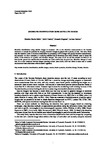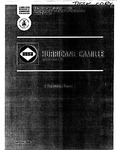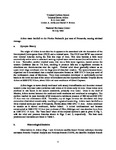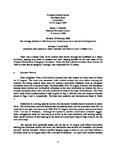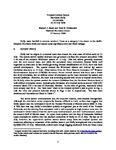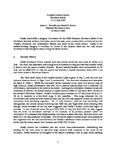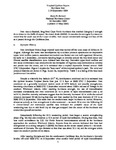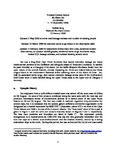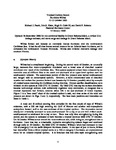Evaluation of shoreline change using optical satellite images, case study of Progreso, Yucatán
| dc.contributor.supervisor | Russell, Paul | |
| dc.contributor.author | Garcia-Rubio, Gabriela | |
| dc.contributor.other | Faculty of Science and Engineering | en_US |
| dc.date.accessioned | 2012-03-26T13:33:35Z | |
| dc.date.available | 2012-03-26T13:33:35Z | |
| dc.date.issued | 2012 | |
| dc.date.issued | 2012 | |
| dc.identifier | 10138646 | en_US |
| dc.identifier.uri | http://hdl.handle.net/10026.1/921 | |
| dc.description.abstract |
A technique to extract the shoreline from optical satellite images has been developed, evaluated and applied to the case study site of Progreso, Yucatán, México. This site was chosen as it is frequently subject to hurricanes, shows shoreline erosion and has a paucity of coastal data. The area under investigation is an 8 km length of shoreline that faces north into the Gulf of México. A novel method to extract satellite-derived shorelines (SDS) was developed ensuring the maximum contrast between sea and land. The SDS was validated using quasisimultaneous in situ shoreline measurements from one day in two different years (2008 and 2010). The in situ shoreline measurements recorded the instantaneous shorewards extent of the wave run-up when walking along the beach. The validation of SDS revealed that the SDS locates consistently seawards of the in situ shoreline, explained by: a) the water depth that an optical satellite image requires to identify a pixel either as sea or land, and b) the shorewards extent of the wave run-up. At Progreso, the overall distance between SDS and in situ shoreline is 5.6 m on average and standard deviation of 1.37 m (in the horizontal) over 8 km of shoreline. For an accurate location of the mean SDS, estimation of the shorewards extent of the wave run-up, tidal level and inter-tidal beach slope were required. In situ measurements regarding the beach profile, shoreline location and water levels were taken into consideration to achieve this. The shoreline change observed over a 6.5 year period allowed the estimation of intraannual and inter-annual shoreline changes and progressive changes in the shoreline location. The intra-annual shoreline change revealed seasonality in the shoreline position. The shoreline position from late winter (March 20, 2004) was landwards (approx. 5 to 9 m) in relation to the earlier winter shoreline position (November 11, 2003). The assessed SDSs from the hurricane season (June to November) are at the landwards envelope limit during the year, between -30 to 15 m in relation to the estimated mean SDS. The largest landward movement (100 m) is related to Hurricane Ivan, detected 13 days after the hurricane passed by Yucatán. The inter-annual shoreline change highlighted that an approximate length of 6 km of shoreline is retreating at a rate between -2.4 and -1.2 m per year. Such estimates of shoreline change would not be possible using other available coastal information at this site. The results of this research show that optical satellite images can be used to study shoreline change over large spatial scales (> 5 km), as well as in short (< 1 yr) and long (> 5 yrs) temporal scales. | en_US |
| dc.description.sponsorship | CONACyT | en_US |
| dc.language.iso | en | en_US |
| dc.publisher | University of Plymouth | en_US |
| dc.subject | Shoreline detection | |
| dc.subject | Coastal dynamics | |
| dc.subject | Remote sensing | |
| dc.subject | Coastal erosion | en_US |
| dc.title | Evaluation of shoreline change using optical satellite images, case study of Progreso, Yucatán | en_US |
| dc.type | Thesis | |
| dc.identifier.doi | http://dx.doi.org/10.24382/4765 |
Files in this item
This item appears in the following Collection(s)
-
01 Research Theses Main Collection
Research Theses Main



